|
Ali Mohammed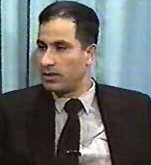 Ali Mohammed has one hell of a resume. A sergeant in the Egyptian Army, a sergeant in the U.S. Special Forces, and a member of al Qaeda who served as Osama bin Laden's chief of security. Along the way, he did a stint as an FBI informant and a CIA agent.
Ali Mohammed has one hell of a resume. A sergeant in the Egyptian Army, a sergeant in the U.S. Special Forces, and a member of al Qaeda who served as Osama bin Laden's chief of security. Along the way, he did a stint as an FBI informant and a CIA agent.Little is known of his childhood, other than that he was born in 1952 in Egypt. He joined the Egyptian Army (which has a compulsory service requirement) sometime around 1970 and remained for 14 years, advancing to the rank of sergeant in the field of military intellgence. In the early 1980s, he took part in an Army exchange program with the Green Berets, at which time he learned English. Around the same time, according to his own account, he connected with members of Egyptian Islamic Jihad, a terrorist group headed by Ayman Al-Zawahiri. After he left the Egyptian military in 1984, Mohammed's official resume included a stint as airline security consultant, but he claimed that he actually worked for the CIA. At the time, the CIA and Saudi intelligence were richly funding a jihad against the Soviet Union by Islamic fundamentalists in Afghanistan. According to the CIA's version of events, Mohammed had approached them about working as an informant. The agency tried him out for a while, but they claim that they fired him because he made unauthorized contacts with Hezbollah operatives. Ali Mohammed had envisioned a career path with the U.S. government, and by gum, he was going to live his dream. He moved to the U.S. in 1985, winning citizenship by marrying a woman he met on the flight over. He enlisted in the U.S. Army a year later. Mohammed was stationed at Fort Bragg, where Special Forces commandos and CIA paramilitary operatives also trained. It would have been quite a convenient posting had he still been working for the CIA, which, of course, he most certainly was not.
As an infiltrator of U.S. society, Mohammed was a stunning success. He taught his courses on Arab culture at the prestigious John F. Kennedy Special Warfare Center. He assimilated so thoroughly that he was known to his terrorist compatriots as "Abu Mohamed ali Amriki" -- "Mohamed the American." Mohammed didn't drop his day job, however. During the late 1980s, around the time al Qaeda was first establishing itself, the sergeant took a few weeks leave from the Army to go kill Soviets in the Afghan war, which was a joint production between Pakistan, Saudi Arabia and the CIA (for whom, we may have mentioned, Mohammed was not working). At one point, the Army asked him to create videotaped lectures on Arab culture for soldiers about to be stationed overseas. Unfortunately, the tapes tended toward inflammatory statements about Israel and an ardent defense of Islamic fundamentalists. The tapes were never presented to U.S. soldiers, according to Mohammed's commanding officer -- not because of their controversial content, but because they were boring. Mohammed's other students found him more interesting. During his time at Fort Bragg, Mohammed traveled to the New York area on the weekends to train potential jihadis in firearms and munitions. His trainees must have gotten something out of the course, because almost all of them went on to bigger and better things.
Another successful student was American-born. Clement Rodney Hampton-El, was wounded while fighting in Afghanistan, before returning to the U.S. and becoming embroiled in a plot to blow up the United Nations. A third protege, Mahmud Abouhalima, was convicted of conspiring with Ramzi Yousef to bomb the World Trade Center in 1993. After Nosair shot right-wing Rabbi Meyer Kahane in New York in November 1990, the FBI searched his apartment and found dozens of documents from Fort Bragg, including classified information about military operations in the Middle East and intelligence about the Soviets in Afghanistan. The evidence taken from Nosair's apartment was buried and largely forgotten until much later. The FBI classified the shooting as the act of a "lone gunman," despite all evidence to the contrary. In late 1989, Ali Mohammed left the Army and set up shop in Santa Clara, California. He roomed with another Egyptian, Khaled Abu al-Dahab, their apartment serving as as home base for their operations and as a crash pad for visiting terrorist dignitaries. Khaled helped pay his share of the rent with a job as a car salesman. Shortly after they moved in, the Silicon Valley headquarters hosted al-Zawahiri, the head of Egyptian Islamic Jihad, who had planned a cross-country tour of the U.S. to raise funds for terrorist attacks under the guise of charitable donations. Fundraising was Dahab's specialty; he funneled money from U.S. donors to terrorist groups around the globe. During the trip, Zawahiri went by an alias. By most accounts, the results of the trip were disappointing. Ali Mohammed, in the meantime, was fast establishing himself as a top tier player in the work of Islamic extremism, with his close ties to both EIJ and Osama bin Laden, whom Zawahiri had met in 1987. Mohammed traveled back and forth between California, Pakistan and Afghanistan, performing a variety of intelligence and security functions for al Qaeda and EIJ.
In the spring of 1993, a joint operation between al Qaeda and EIJ in New York City became front page news with the February bombing of the World Trade Center by Yousef and several of Mohammed's trainees. A few months later, the FBI broke up the rest of the NYC cell, which had been led by a blind Egyptian radical cleric named Omar Abdel Rahman. Ali Mohammed walked in and out of contact with the cell during this period. In 1993, Osama bin Laden told him to start casing targets for terrorist attacks in Nairobi, Kenya, where Mohammed had helped set up an al Qaeda cell. Mohammed did surveillance on the U.S. embassy in Nairobi, and other locations in Northern Africa, taking photos, drawing blueprints and writing reports. He trained a cadre of personal bodyguards for bin Laden after an assassination attempt in 1994. But Ali Mohammed was the ultimate workaholic. He couldn't be happy with just one job, or even three. So he also began working as an informant for the FBI. The FBI should have known better. The feds were aware of Mohammed's connection to Nosair and other U.S.-based Islamic terrorists, but the FBI failed to connect the dots... or rather, it has never publicly admitted to having connected the dots. The official story is that Mohammed volunteered information to the FBI on illegal immigrant operations that were unconnected to his own underground railroad for terrorists. According to this official story, Mohammed came to the conclusion that he could divert attention away from his own border smuggling operations through this relationship.
The logic here is somewhat problematic. It's not clear how Mohammed would be better off drawing attention to himself and then diverting it away from himself. Unless, of course, he was already the recipient of attention from the FBI. No one has said that... on the record. But by the mid-1990s, there had been plenty of reasons for the FBI to take a look at Mr. Ali Mohammed. For one thing, his fingerprints were all over the World Trade Center bombing and the U.N. bombing plot -- literally. After the WTC attack, the FBI had looked back into its Nosair file and found the Fort Bragg documents, among many other valuable pieces of intelligence which had been sitting idle for three years. Several of Mohammed's trainees were involved in both plots, and the FBI had actually photographed Mohammed with his trainees during a 1989 firearms training course (another piece of intelligence that had been gathering dust for years). Furthermore, Mohammed had a previous association with the leader of the NYC cell, the blind sheikh, Abdel-Rahman. Not only had Mohammed had known him in Egypt, but Rahman had been his spiritual mentor. Four soldiers from Mohammed's Army unit had assassinated Egyptian President Anwar Sadat in 1981, not exactly a low-profile event. Rahman had been charged with inciting that assassination. (He was acquitted.)
He had been the beneficiary of U.S. government incompetence for nearly a decade, but by the end of 1994, Mohammed's web of deceptions was beginning to unravel. Shortly after Khalifa's arrest, Mohammed received a phone call in Africa. The FBI was subpoenaing him to testify in the prosecution of Rahman and his co-conspirators for the U.N. bombing plot. Mohammed played with the FBI, offering a few scraps but little of substance. He was not called to testify in the case, nor was he detained. Even as he was talking to the FBI, Mohammed was helping Zawahiri raise funds which would later be used to bomb the Egyptian embassy in Pakistan. Witness the awesome glory of your tax dollars at work. The U.N. plotters went on trial in 1995, and Ali Mohammed was all over the case. He was not made available to testify, despite intense interest from the numerous defense attorneys representing a dozen defendants. Some of the defense attorneys openly charged that Mohammed was still working for the CIA when he had trained the U.N. plotters, who they claimed were guilty of nothing more than supporting CIA-funded jihad operations overseas. Whatever the jury thought of that specific claim, they found the defendants guilty and the investigation closed down again.
At this point, it's fair to wonder exactly what the FBI was up to. They had clearly tied Mohammed to the New York City terror cell that executed the World Trade Center bombing. He had even told them a little about Osama bin Laden in their chats about the Rahman case. Whatever happened behind the scenes at this point is shrouded in secrecy. But one thing was clear -- they still didn't have the situation under control. By 1996, Mohammed was again globetrotting freely. He helped move al Qaeda back to Afghanistan when the Sudan ejected bin Laden due to U.S. pressure. He was also working to complete the plan he had set in motion during his scouting trips in 1994. Although al Qaeda had already launched attacks on U.S. soil, the next phase was considered the first "official" shot of the War on Terror. On Aug. 7, 1998, truck bombs exploded almost simultaneously at U.S. embassies in Kenya and Tanzania. More than 230 people were killed, thousands were injured. Finally, the U.S. criminal justice system began to move. bin Laden and Zawahiri were indicted, along with several other operatives suspected of being involved in the bombings. A handful of suspects were picked up in Kenya and Tanzania, and shipped back the U.S. At the very end of a 16-name list of indictments, the name of Ali Mohammed appeared.
After being interrogated in 1994, Mohammed had exercised patience. He went back to California and stayed put. If he had done the same thing again, he might be free today. But this time, he made plans to leave the country and fly to Egypt. Faced with the prospect of losing him altogether, the FBI reluctantly arrested him on 10 September 1998. News of the arrest was closely guarded. The U.S. secretly detained Mohammed for eight months. No one knows exactly why, but the conventional wisdom is that prosecutors were trying to cut a deal. The deal failed, and he was indicted in May 1999 along with four other suspects in the embassy bombings. Finally, someone flinched, although it's not clear which side. A deal was struck, under terms of intense secrecy, and on 24 October 2000, he entered a guilty plea. He told the court that he was an agent of al Qaeda and Egyptian Islamic Jihad. He admitted to helping plan the embassy bombings. He admitted training al Qaeda members in the U.S. and abroad in the arts of terrorism. He admitted coaching al Qaeda recruits on how to build effective cells. He admitted training bin Laden's personal guards, and he admitted helping Zawahiri visit the U.S. to raise funds.
And they're still holding their breath today. Ali Mohammed never testified. In fact, Ali Mohammed was never seen again. After entering his guilty plea, Ali Mohammed's sentencing was scheduled for July 2001. In October 2001, after The Big One, CBS News reported that Mohammed was still "awaiting sentencing." Some time between then and now, Ali Mohammed vanished from the federal prison system. His current whereabouts are unknown. He was Osama bin Laden's right-hand man, he apparently worked for the Army, the FBI and the CIA. And now he's just gone. Unlike the case "enemy combatant" Jose Padilla, there have been no press conferences about Ali Mohammed. John Ashcroft never trotted him out to scare people with. As a result, there is no public outcry over his fate. There are no lawsuits seeking his release. Despite the fact that he was a key player in al Qaeda's infiltration of the United States, he has simply vanished without a trace. No muss. No fuss. Woodward and Bernstein don't seem to be on the case. It's a tough story, a story with no ending. It's possible that somehow, someday, we'll find out what the deal was with Ali Mohammed. Exactly who he worked for, and when, and why, and what he did. But then again, maybe we won't.
|
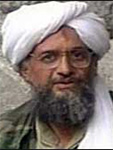 By the early or middle 1980s, a parade of sleeper agents associated with Zawahiri's EIJ emigrated to the U.S. and began to set up a rudimentary terrorist network. Ali Mohammed was one of the earliest members of that cell. He settled in at Fort Bragg as an instructor in Arab culture. His official job was the rather lowly designation of "supply sergeant," but he took part in panel discussions and lectured on Islamic culture, while perusing sensitive documents which he occasionally took home to share with friends. He received commendations for his fitness and training.
By the early or middle 1980s, a parade of sleeper agents associated with Zawahiri's EIJ emigrated to the U.S. and began to set up a rudimentary terrorist network. Ali Mohammed was one of the earliest members of that cell. He settled in at Fort Bragg as an instructor in Arab culture. His official job was the rather lowly designation of "supply sergeant," but he took part in panel discussions and lectured on Islamic culture, while perusing sensitive documents which he occasionally took home to share with friends. He received commendations for his fitness and training. 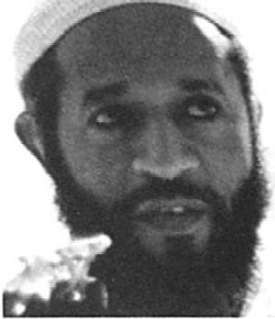 El-Sayyid Nosair, for instance, used his new shooting skills to blow the head off of a New York City rabbi in 1990. Even after shooting several witnesses during his failed escape attempt, he was acquitted of the murder and only served time for a firearms violation.
El-Sayyid Nosair, for instance, used his new shooting skills to blow the head off of a New York City rabbi in 1990. Even after shooting several witnesses during his failed escape attempt, he was acquitted of the murder and only served time for a firearms violation. 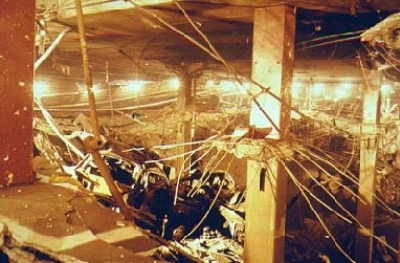 Mohammed trained terrorist operatives at
Mohammed trained terrorist operatives at 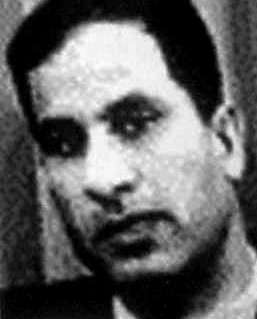 According to investigative journalists John Miller and Michael Stone, writing in The Cell, the relationship between Mohammed and the FBI dated back to 1990, which means he worked for the U.S. government throughout the entire planning of the World Trade Center bombing. (Other reports have the relationship starting later.)
According to investigative journalists John Miller and Michael Stone, writing in The Cell, the relationship between Mohammed and the FBI dated back to 1990, which means he worked for the U.S. government throughout the entire planning of the World Trade Center bombing. (Other reports have the relationship starting later.)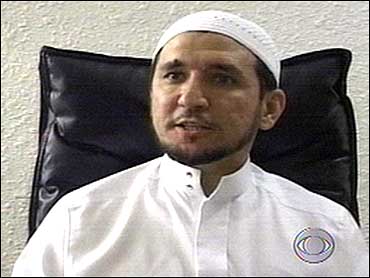 In December 1994, Osama bin Laden's brother-in-law,
In December 1994, Osama bin Laden's brother-in-law, 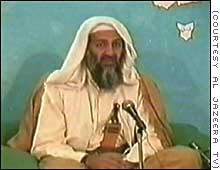 Despite being the recipient of all this attention, Mohammed continued to perform bin Laden's bidding with impunity. Mohammed obtained the complete list of unindicted co-conspirators and faxed it to al Qaeda. The list included his own name, as well as the names of bin Laden and Khalifa.
Despite being the recipient of all this attention, Mohammed continued to perform bin Laden's bidding with impunity. Mohammed obtained the complete list of unindicted co-conspirators and faxed it to al Qaeda. The list included his own name, as well as the names of bin Laden and Khalifa. 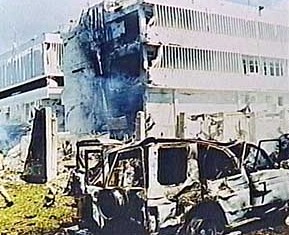 Once again, Mohammed had been subpoenaed to testify in a terrorism investigation. He was called before a grand jury convened to look at the embassy bombings, and he told a fresh series of lies.
Once again, Mohammed had been subpoenaed to testify in a terrorism investigation. He was called before a grand jury convened to look at the embassy bombings, and he told a fresh series of lies.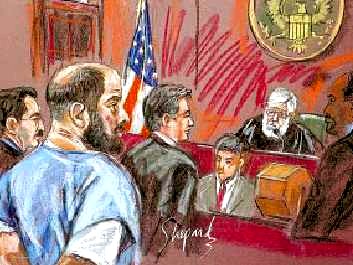 While all these admissions were instructive about the general outlines of al Qaeda's operations, they did little to advance the embassy bombings case. The media and virtually every observer of terrorism policy expected that Ali Mohammed would be called to testify in the embassy bombings trial, and they held their breath awaiting the information he would divulge...
While all these admissions were instructive about the general outlines of al Qaeda's operations, they did little to advance the embassy bombings case. The media and virtually every observer of terrorism policy expected that Ali Mohammed would be called to testify in the embassy bombings trial, and they held their breath awaiting the information he would divulge...